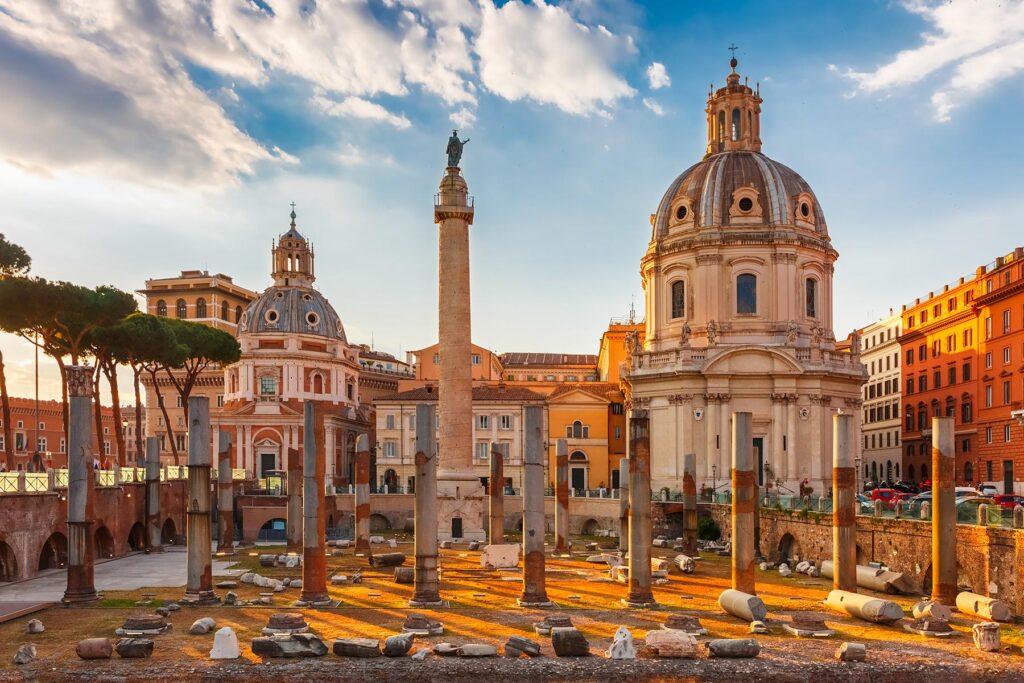5 Sites in Rome for Ancient Site Lovers
The ancient Roman Emperor Augustus famously declared, “I found Rome a city of bricks and left it a city of marble.” And though many of the Eternal City’s most incredible ancient sites have been left in ruins, gazing upon them lets you imagine what Rome might have been like when men roamed the streets in togas and gladiators battled to the death. Between the Colosseum, the Roman Forum, and the many bathhouses, markets, and theaters, you could spend a lifetime visiting all of Rome’s ancient sites and archeological ruins. The city is so saturated with them that any time construction workers start digging, they’re bound to discover more relics that have to be preserved. If you’ve got a limited amount of time to explore, these 5 ancient sites are a good place to start.
1. Roman Forum
One of the Eternal City’s most emblematic sites, the Roman Forum stretches out between the Capitoline and Palatine Hills. This vast area filled with crumbling columns, the ruins of temples, palaces, and shops was once the hub of the ancient world and the center of political, commercial, and religious life in the city. The various ruins span almost 900 years, from around 500 BC to AD 400. There are no signs marking what they were once used for, so it’s worth going on a guided tour if you want to distinguish the complex of the Vestal Virgins from the Temple of Saturn.
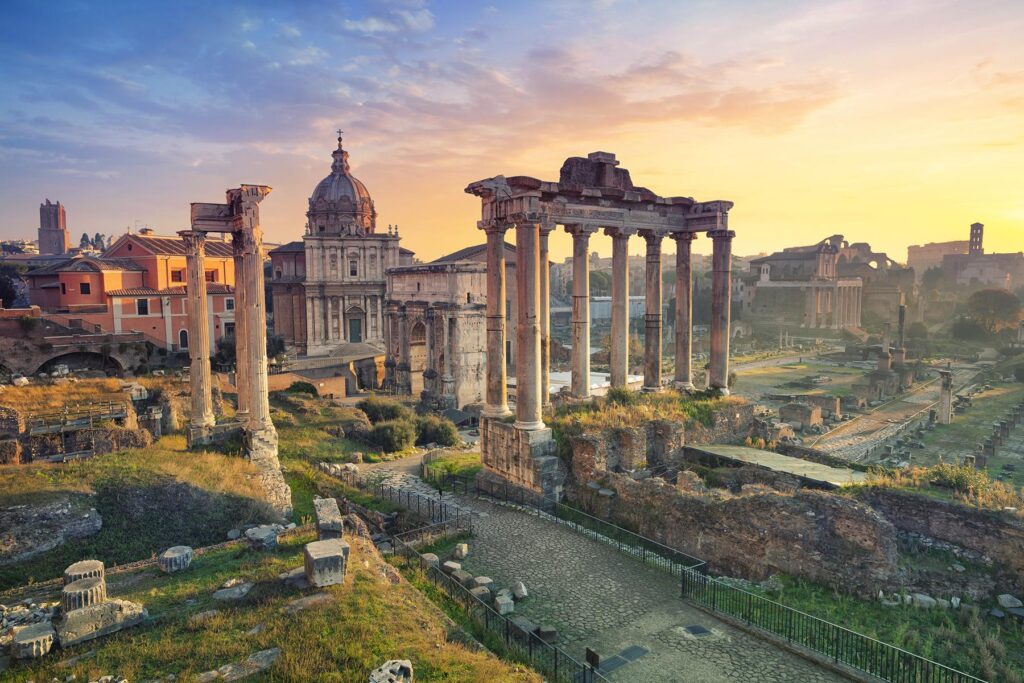
2. Colosseum
Perhaps the monument most symbolic of ancient Rome, the Colosseum is one of the city’s most fascinating—and popular—tourist attractions. The Emperor Vespasian commissioned it around AD 70–72 and his son Titus officially opened it in AD 80 with 100 days of games, including wild animal fights and gladiatorial combat. It was the largest amphitheater in the Roman world, with seating for 50,000 people, until it was abandoned and later used as a quarry for projects like the Basilica di San Pietro and San Giovanni in Laterano. It underwent a restoration in 2016 courtesy of Tod’s CEO Diego della Valle.
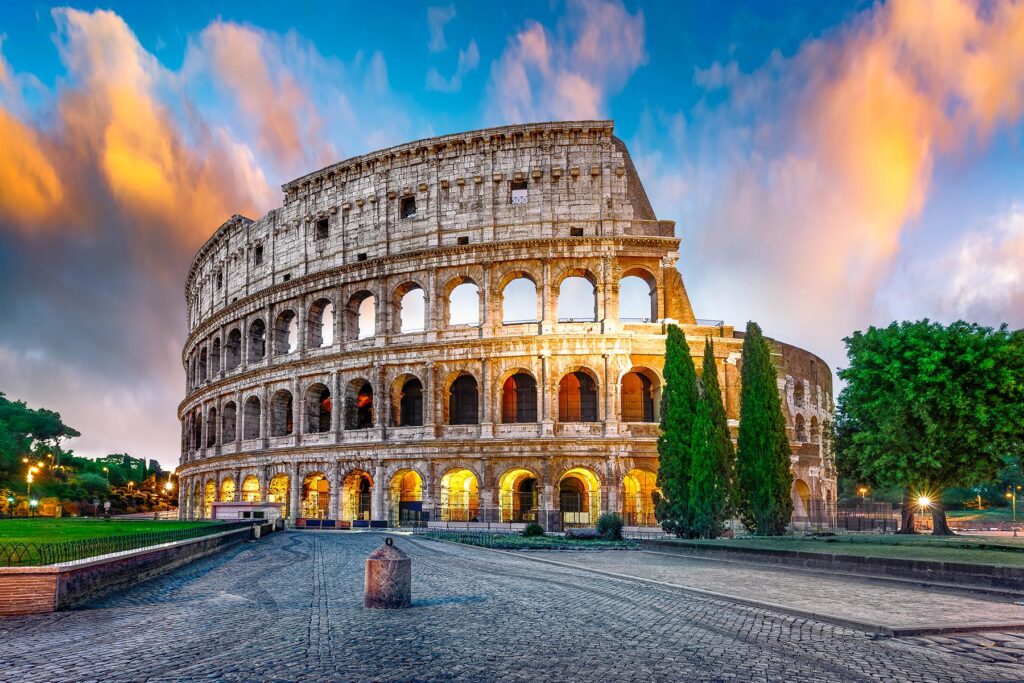
3. Circus Maximus
It might be hard to imagine now, but the grassy area between the Palatine and Aventine Hills was once the site of the largest hippodrome in the Roman Empire. The huge oval course was rebuilt under Julius Caesar and later enlarged by subsequent emperors. During its heyday, it hosted epic chariot races and competitions that sometimes lasted as long as 15 days.
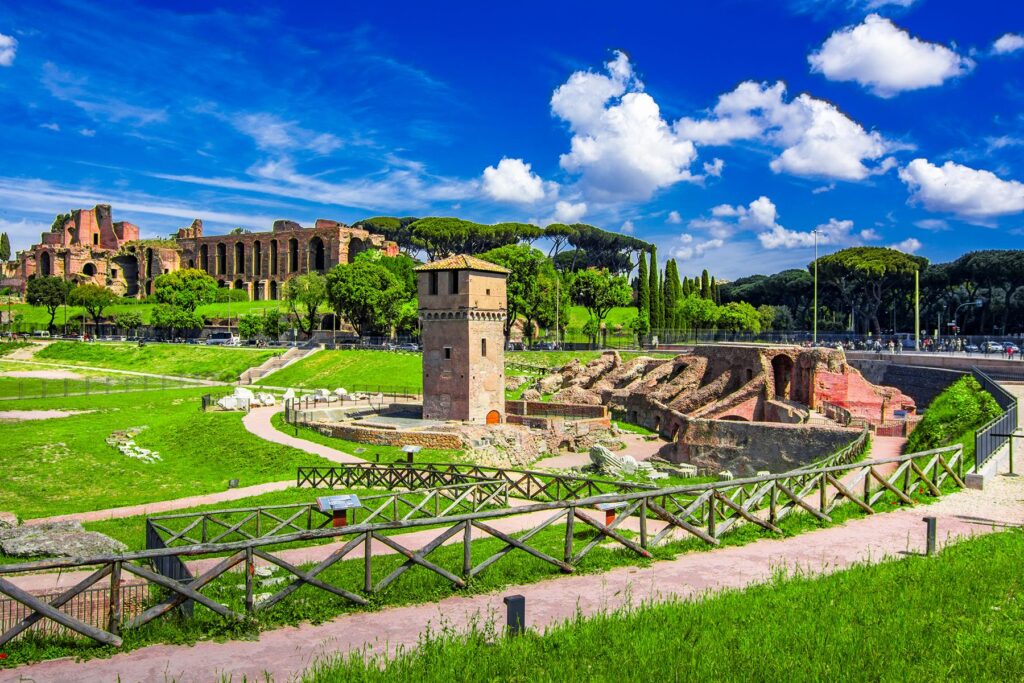
4. Pantheon
Built as a pagan temple to the gods, the Pantheon is Rome’s best-preserved ancient site, perhaps because it was later consecrated as a church. It was originally constructed by Augustus’s son-in-law Agrippa in 27 BC and was later rebuilt by the emperor Hadrian around AD 120. Step inside and you’ll be amazed at its perfect proportions and the sunlight streaming in from the 30-foot-wide oculus. It’s truly a wonder of ancient engineering.
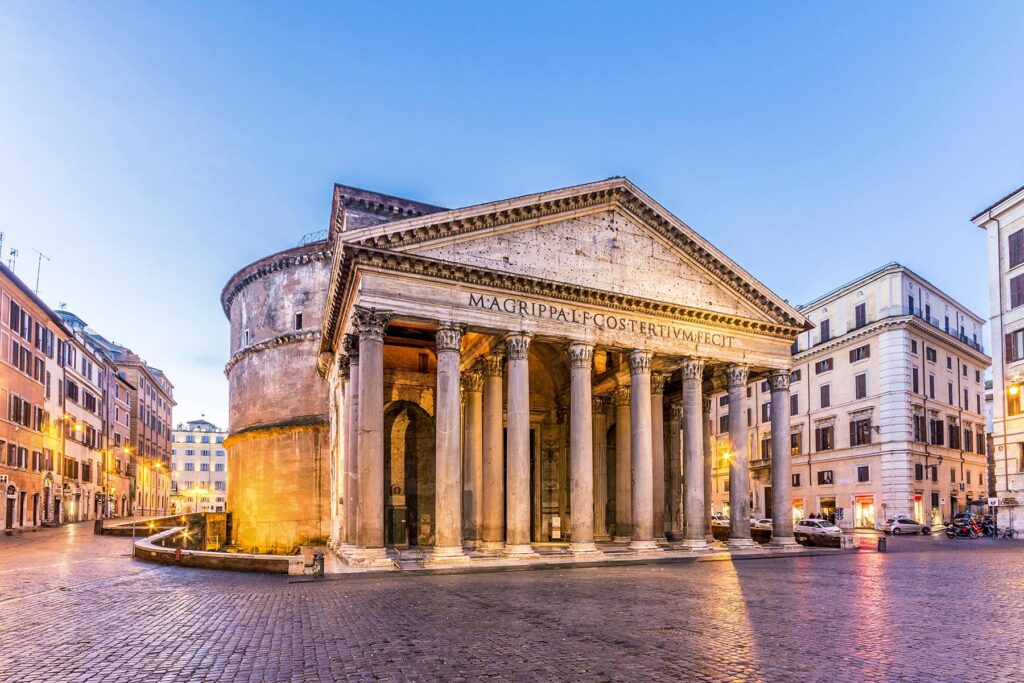
5. Foro di Traiano
Located on the road that leads from Piazza Venezia to the Colosseum, Trajan’s Forum was the last of Imperial Rome’s forums—and the grandest. Comprising a basilica, two libraries, and a colonnade surrounding a piazza, it’s connected to a market that once bustled with commercial activity in the shops, taverns, and administrative offices tasked with feeding the citizens. It’s now home to the Museo dei Fori Imperiali, which displays archeological relics and has a video presentation showing what the forum was like in its heyday.
